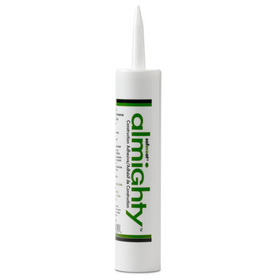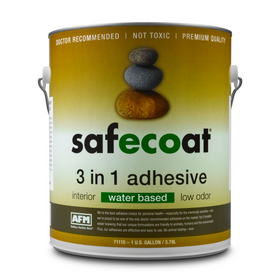
How to Find Healthy Building Materials: Declare Label
Last Updated: Apr 7, 2025Do you ever wonder where all your stuff comes from and how it is made? The supply chains that make up our globalized and industrialized economy can make it nearly impossible to truly know what we are purchasing. The increasing distance and separation between consumers and producers (and the origins of production) are at least in part responsible for some of the ecological and social damage that define our modern times—but what can be done?
As consumers continue to push for more verifiable sustainable products, a host of green certification programs (and not so green) have begun to emerge to help people make more responsible and educated consumer decisions. Specifically, the Declare Label takes an innovative approach to provide builders and homeowners with a transparent platform to make educated decisions regarding the building materials that they plan to use in new construction or renovation projects.
Table of Contents
- What is the Declare Label?
- Why is the Declare Label Needed?
- How Do Homeowner Use the Declare Label?
- Bottom line

What is the Declare Label?
There are dozens of home sustainability certifications available today. From national programs such as LEED to regional certification programs such as Built Green to certification programs that respond to specific building niches/products such as the EPA WaterSense Label (for plumbing products) or the wide variety of wood certification programs, homeowners have a diverse collection of certifying agencies to make sure that their home is as healthy and environmentally responsible as possible. However, during a quick trip to the hardware store to pick up a caulk tube to reseal an old window frame that has begun to crack, most people have limited access to information regarding what exactly is in the caulking product they are purchasing.
The Declare Label is billed as the “nutrition label for building products” and acts as a “transparency platform and product database that is changing the materials marketplace.” The Label was developed by the International Living Future Institute (ILFI)—a U.S.-based non-profit that is no stranger to the sustainable building industry. They have developed one of the most rigorous and complete building certification programs called the Living Building Challenge.
The Declare Label seeks to answer three fundamental questions related to various building products:
- Where does a product come from?
- What is it made of?
- Where does it go at the end of its life?
Why is the Declare Label Needed?
Our great grandparents most likely had a personal connection to the farmer who sold them their food and the lumberyard manager who sold them the 2x4s for their home. That proximity allowed for a certain sense of transparency in how products were produced, marketed, and eventually sold. If a local lumberyard was clear-cutting a forest next to an important spring that provided water to the community, consumers could react both through boycotting that lumberyard and through direct action to make sure that the effects of their purchases were ethical, fair, and sustainable. However, when taking a walk through Home Depot today, it can be close to impossible to know where a product comes from, who produced it, under what conditions, and the environmental effects associated with that product's production.
The same can be said for walking through the aisles of a supermarket. As the industrial food system came to dominate the food that the vast majority of Americans put on their tables, people understandably wanted to know what they were consuming to make educated health decisions. To address this, in 1990, the U.S. government passed the Nutrition Labeling and Education Act of 1990 (NLEA), which according to the FDA, “provides FDA with specific authority to require nutrition labeling of most foods regulated by the Agency; and to require that all nutrient content claims (i.e., 'high fiber,' 'low fat,' etc.) and health claims be consistent with agency regulations.”
The same educational nutrition label that lets consumers know what they are consuming isn’t available on other commonly purchased products. In the case of the building materials marketplace, the Declare Label is a unique and pioneering program that seeks to increase access to information and knowledge regarding what is in the products we purchase for our homes.
1. Where does the product come from?
This transparent information essentially allows homeowners, architects, and builders to make an educated decision regarding the products they purchase or specify for the home. Rise has written extensively about how the embodied energy footprint is an important (though often overlooked) element of home sustainability. By clearly answering this first question, a homeowner can diligently opt for products manufactured closer to their homes. Purchasing ceramic tile flooring made in China, for example, will come with a much higher embodied energy footprint (due to the transportation requirements) than tile flooring made at a plant the next state over.
2. What is the product made of?
The second question related to the individual components of building material is often a bit trickier. Due to the long and complex supply lines of some types of building materials, many manufacturers might find it hard to know with certainty what types of chemicals make up the products they bring to market. At first, the Declare Label focused on determining whether or not a certain product containing any of their “Red List chemical ingredients” which have been shown to pollute the environment, bio-accumulate up the food chain until they reach toxic concentrations, and cause harm to construction and factory workers.

A recent partnership with Toxnot, a company specializing in supply chain management for health and sustainability, allowed the Declare Label to more strictly determine—and educate consumers on this topic—the specific chemical ingredients that go into different building products. This partnership between ILFI and Toxnot has resulted in a unique software tool and chemical database that offers a consistent method to track specific products' chemical ingredients throughout the supply chain. Companies and manufacturers that want a Declare Label for their particular product are given access to the software program, which can determine the existence of chemical constituents down to 100 parts per million. If a company is not satisfied with the chemical ingredients utilized throughout its supply chain, the software also offers advice on more sustainable chemistry options.
The result of a Declare Label is a detailed Ingredient List where consumers can read ingredients by component and category. Ingredients without restriction are listed in gray, red list chemicals are listed in bright orange. In contrast, U.S. EPA Contaminants of Concern and the European Union’s REACH chemical ingredients are listed in light orange. The Declare Label lists the raw material extraction location so that consumers can know the origins of every product they purchase.
3. Where does the product go at the end of its life?
The Declare Label offers detailed information regarding end-of-life options for specific building products. This gives consumers important information regarding whether or not the product can be effectively recycled or salvaged. The label specifies what percentage of the product is recyclable, what percentage will likely end up in landfills, whether take-back programs are available from the manufacturer or government agencies, and whether or not the product constitutes hazardous waste. The last part of the label also mentions whether or not the product is VOC compliant with the California Public Department of Health and whether it conforms to the Living Building Challenge's norms.
How Do Homeowner Use the Declare Label?
The good news is that the Declare label database is free to use for anyone who has internet access. The more challenging piece is finding the right product for your home, as the database contains many commercial building products. But it is still useful: to get started, search for the building material in question. For example, a search for “drywall” returns results of several different manufacturers, each with its own product label for ingredients. A search for “kitchen” will show you several different options for countertops. You can also search by the manufacturer to see if their products are listed. No matter the product or manufacturer, to be safe, you’ll want to look for products labeled “Red-List Free.”
Bottom line
The Declare Label fills an important void in the wide range of sustainable building certification programs by offering consumers easy to read and understand the label associated with individual products. This increased access to important health and environment-related information will allow homeowners, architects, and designers to continue to make more educated consumer decisions for their home building and renovation projects.
Tobias Roberts
Tobias runs an agroecology farm and a natural building collective in the mountains of El Salvador. He specializes in earthen construction methods and uses permaculture design methods to integrate structures into the sustainability of the landscape.










